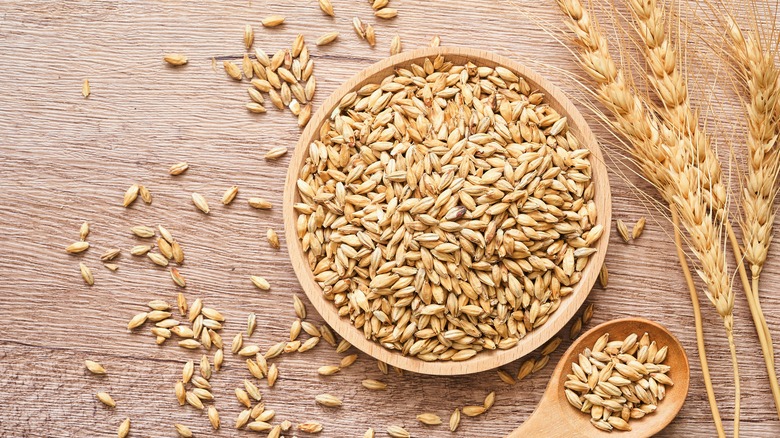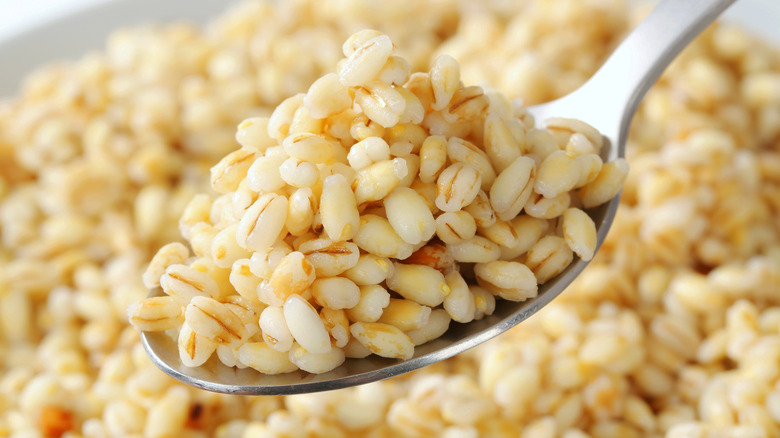How To Cook Barley So It Doesn't Taste Terrible
Can't count yourself as a fan of barely? Maybe it's time to re-evaluate your prejudice against this nutritious and hearty grain. Chances are you feel a little leery of barley because of disastrous attempts at cooking it properly. A poor batch of cooked barley can have a displeasing gummy texture or an overpowering bitter taste. However, there are many ways to sidestep these issues, and it all comes down to the details in the cooking.
Ideally, barley should have a texture that's both chewy and toothsome, but not gooey or tough. It may seem simple enough to get this texture through boiling with the right amount of water, but there are a few things you have to do after the cooking to ensure success. The first involves steaming the barley after boiling, i.e. letting it sit in its still-hot juices so that moisture can reconstitute in the barley to create a nice chew. The second requires fluffing your cooked barley (no, it's not just for pillows) after that generous steam. This helps separate the grains a bit, which can keep them from forming a gluey texture. You can also take another approach, and make a barley risotto. This cooking method has you stirring in stock a bit at a time to create a barley mix with the perfect al dente bite. It leans into barley's naturally firm texture, making a surprisingly nutritious risotto.
Tackling taste and texture
Keep in mind that there are two kinds of barley available for cooking: hulled barley and pearled barley. Hulled barely takes longer to cook, and still contains the bran and endosperm layer. Often, an overnight soak helps accelerate the cooking time. Pearled barley — used in recipes like corn and barley salad – is faster to cook, doesn't need a soak, and is still nutritious, but doesn't have that extra boost of fiber from the bran. If you're short on time or new to the barley game, go with the pearled barley, which is easier to deal with.
Beyond nailing the texture of your barley, a main complaint with barley is that it can taste bitter. This may have something to do with the freshness of your grain, so make sure that you aren't cooking past its expiration date, especially if it's the more perishable hulled barley. You can tone down the bitter flavors by incorporating a bit of hot sauce or acidic ingredients, like vinegar or lemon juice. Second, you may need to add some other seasonings to enhance the bland barley flavor. Consider cooking it in stock rather than water, adding plenty of salt, and stirring in some fresh herbs to up the ante. Once you make these few adjustments to your pot of barley, you'll soon discover it has many culinary charms.


